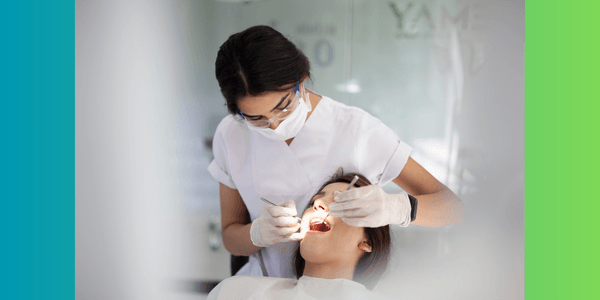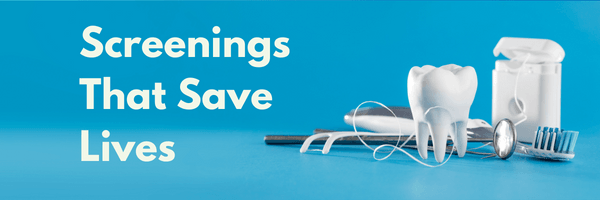
8 Steps to Optimize Your Hygienists’ Patient Care and Productivity
Posted April 11, 2024
The job market is tighter than ever for registered dental hygienists (RDHs). This begs two questions:
- Are you at risk of losing a dental hygienist?
- Is your practice challenged by a deficit of hygiene production hours?
Here are eight steps to better support your dental hygienists to meet practice production goals while serving patients at the highest level.
1. Ensure your dental front office team is doing its best to maximize hygiene production
Maintaining a full schedule requires lots of communication. Here are some best practices every dental office can start right away:
- Implement a solid recall system tailored to your patient’s specific needs and health conditions – including whether a tighter recall system might be needed based on the level of care they require.
- Personally contact patients to confirm appointments whenever possible.
- Have an established protocol for cancellations. It helps to keep a waiting list or notes on patients who have called to reschedule but couldn’t be accommodated.
- Remember while doing all this that the gap in your production schedule is not your patient’s problem. Calling patients and asking them to reschedule their appointments to accommodate your schedule isn’t ideal. It can annoy patients, so if you must do it, do so sparingly.
- Be a place that patients want to visit. Be the front desk that makes patients feel like their care is compassionate. Personalize handoffs and be highly efficient and attentive to patient questions, concerns, and needs.
2. Evaluate the equipment your dental hygienists are using
New tools and technology ensure the team’s workflow is smooth. Additionally, they allow for a higher quality of care for the patient, leading to better patient experiences. Often, with upgrades, everyone in the workflow benefits.
Take stock of office equipment to ensure good working conditions and regular equipment servicing for maximum efficiency. Poorly maintained and outdated equipment sends apathetic signals to your team. Not only that, but it can also lead to potential risks to patient care. So, it’s important to ask your team to check in consistently to ensure the equipment is working well. A productive hygiene team is a comfortable one.
- Equipment for Individual Team Members: Our bodies and needs are all unique. We perform more effectively and efficiently when comfortable, especially in an 8-hour physical workday. Provide the PPE they need and make access to PPE easy. Listen to your team, even when it sounds like they are making a subtle complaint about a chair giving them back problems, poor lighting, or PPE that causes discomfort. Show them you’re listening and care by replacing or repairing these things to make it more comfortable for them to go about their workday more effectively and efficiently. If your budget doesn’t allow for immediate updates or replacements of resources, show them you care by detailing plans for updates and repairs.
- Equipment for the Team: Offer incentives for the team at the individual level (a special loop, Nevi, or a new, more ergonomic chair, more comfortable PPE…) and the team level (a new Isovac for biofilm therapy). Consider providing a budget to allow them to get what they need. This would empower them and have them feel seen and cared for.
3. Consider giving your hygienists a boost with a good hygiene assistant
An assistant can maximize the time each of your hygienists spends with a patient and have the important conversations that lead to improved health and acceptance of dental treatment. Data collection, communication with the doctor, handoffs, and operatory preparation for the next patient are all improved, and production can increase. The cost-benefit analysis of changing up the staff operations can pay for itself quickly while reducing staff churn and burnout.
4. Know what your hygienists’ work entails
As a hygienist, it’s frustrating when others working in the practice do not appreciate the amount of work that goes into a certain patient’s hygiene appointments and the extra minutes taken by a good RDH to do a thorough evaluation, get to know the patient, and converse about patient concerns. A productive practice creates opportunities for all team members to learn about each other’s roles and weigh in on how they can better support each other.
5. Schedule patients so your hygienist can take comfort breaks throughout the day
Be mindful that dental hygienists are more comfortable, happy, and productive when provided with daily breaks. Don’t forget their humanity––they need windows of time for trips to the bathroom, hydration, and nutrition. Offer them support for needed quick breaks, as they help to increase focus, mental acuity, energy, and manual proficiency.
6. Pay your hygienist for no-shows or open appointments in the middle of their day
Our research has shown that 92% of dental hygienists are paid their full rate. Between 2% and 3% are paid a reduced rate. Suppose you are among the 5% of dental practices not compensating your hygienist for open appointments in the middle of their day. In that case, this is a good time to reconsider your compensation policy.
7. Empower your hygienist to make deeper connections with patients a priority
Nearly 83% of hygienists are paid hourly and most spend more than 50 minutes with each patient according to our research. During that hour, the minutes spent in patient-centered conversations are valuable because these minutes lead to filling the doctor’s schedule with treatment. But more than boosting the practice’s production, this quality time makes each hygiene appointment more than a clinical transaction. It makes the appointment feel meaningful. One conversation at a time, they have the power to transform the health and lives of patients.
Dental hygienists are uniquely poised to build rapport by getting to know patients individually. Understanding what is important to each patient allows one to uncover aspects for improved case acceptance. Communicating about an individual’s life circumstances, interests, health status, and oral health questions and concerns builds trust and rapport.
Empower hygienists to initiate conversations about what is important to patients. These conversations involve building a pathway to trust to gain patient acceptance. Empowerment includes team conversations and check-ins about how important this is to the practice’s success. It includes doctors recognizing that their hygienists are fostering trust that helps them successfully present treatment and gain patients’ acceptance.
8. Talk with your team about ways to support one another
Daily routines and problem-solving can get in the way of looking back to the bigger picture. This includes empowering conversations, better habits to develop, and what technology to strategically upgrade. Perhaps, your practice is ready for an annual checkup that asks, “Are we doing everything we can to support each other in optimizing a balance of hygiene production, patient trust, and a flourishing dental practice as a whole?”
The conversation around this question will re-energize your team and help create a thriving culture. Additionally, it acknowledges changes that can improve performance, job satisfaction, patient satisfaction, patient retention, new patient acquisition, and case acceptance.
We connect and educate more than 900,000 job seekers in the U.S. and Canada to build better places to work through teams that excel.



.png)




.png)
